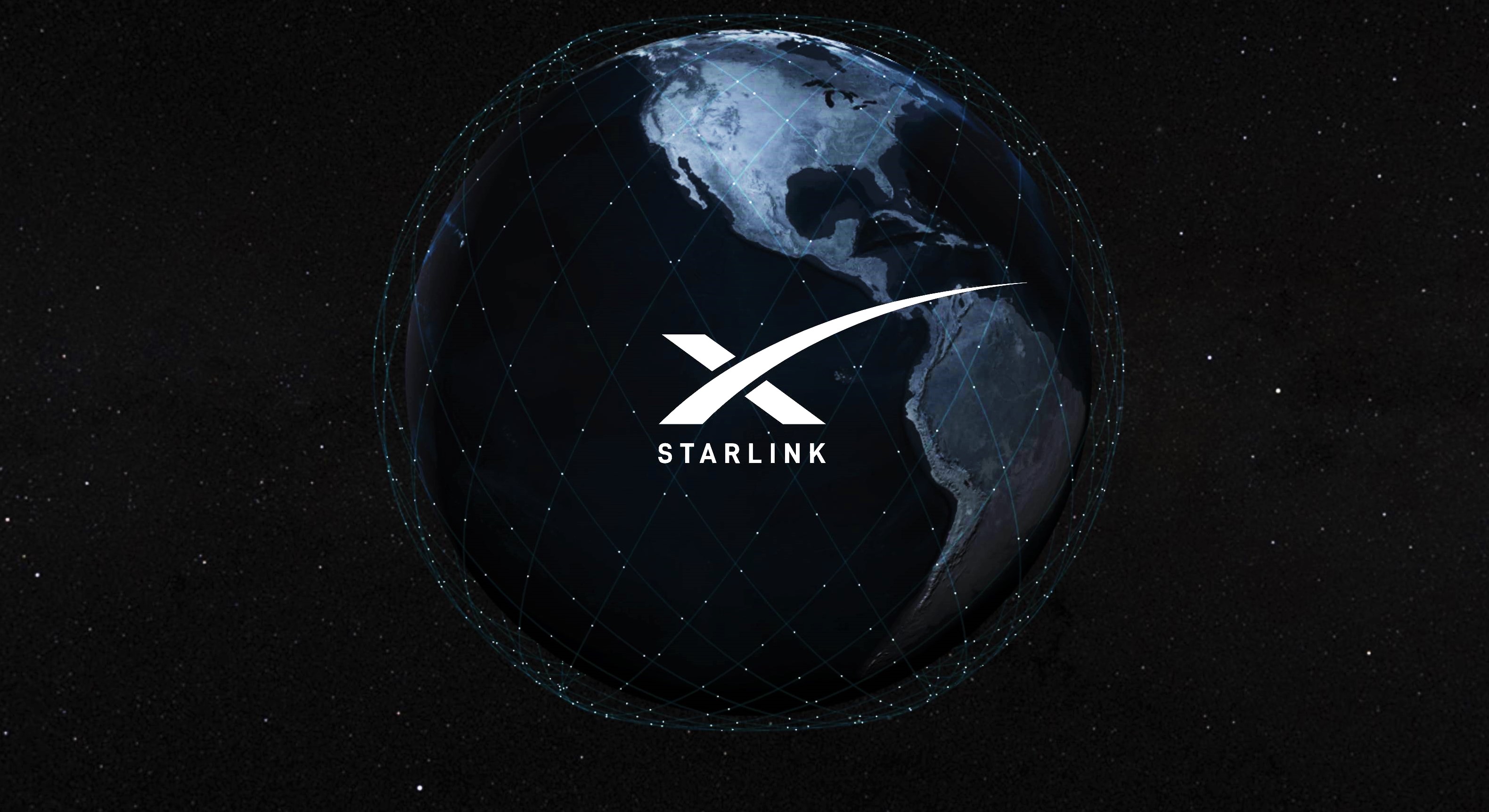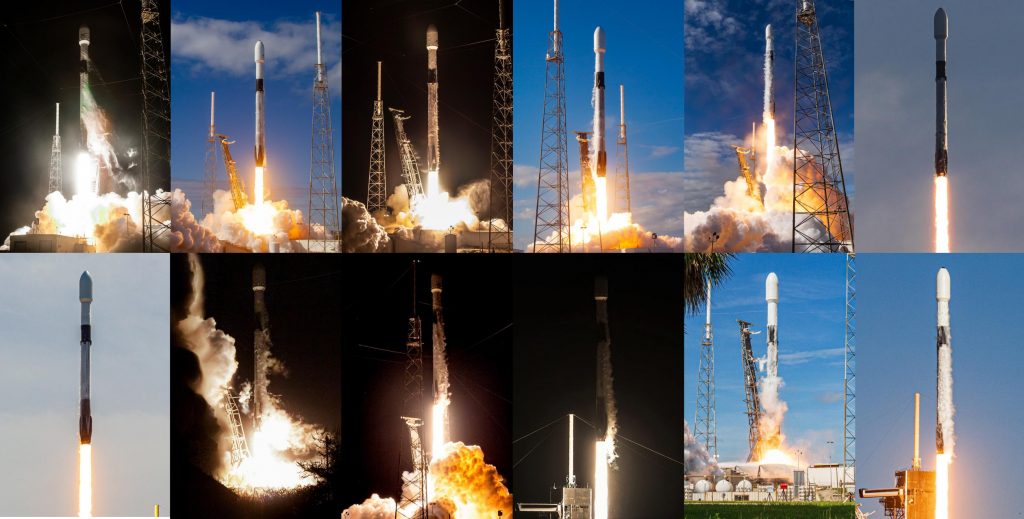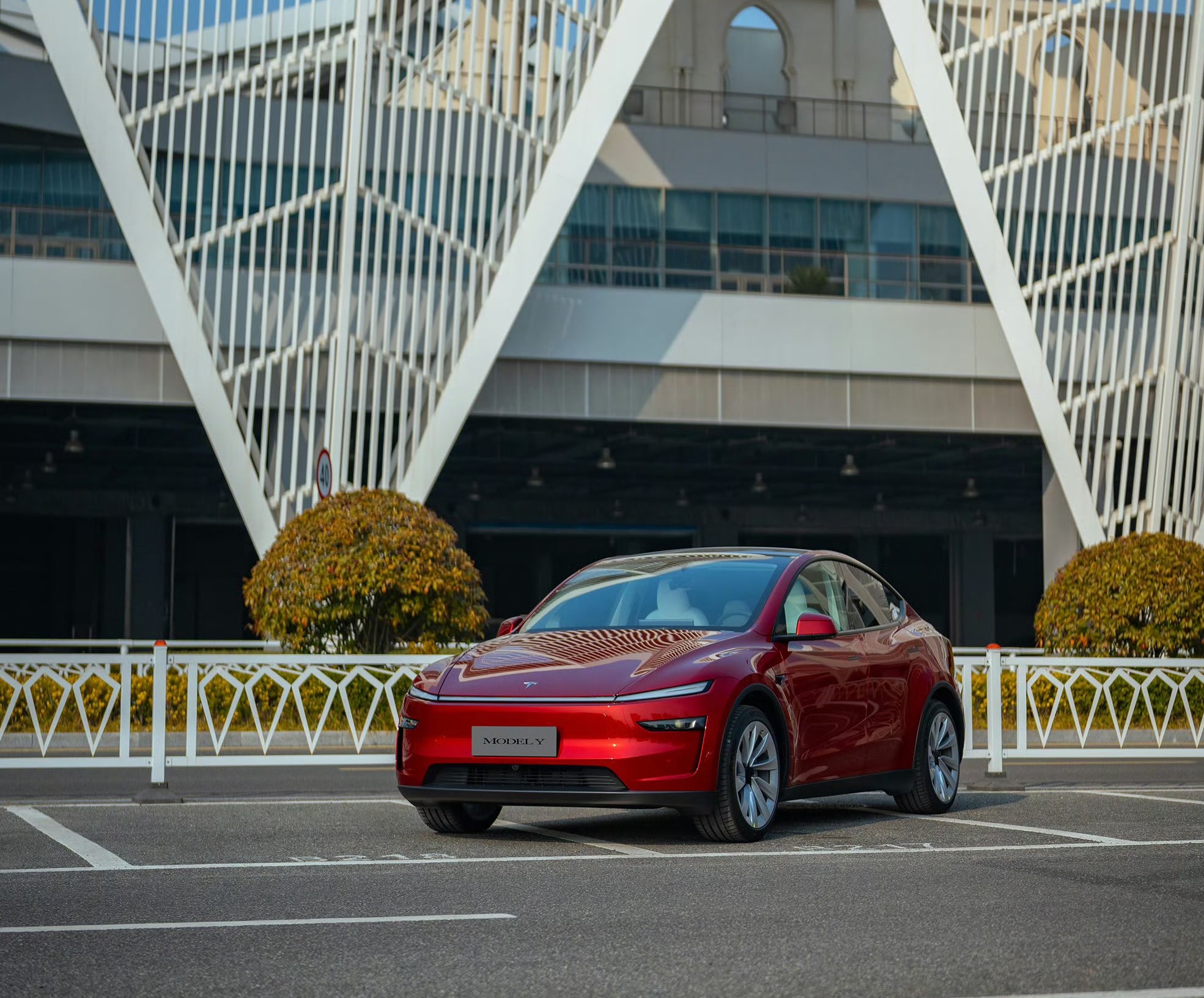

News
SpaceX Starlink partners with Microsoft Azure to deploy cloud computing anywhere
Microsoft Azure has announced a partnership with SpaceX that will give customers the ability to both access and deploy cloud computing capabilities anywhere on Earth with the help of Starlink internet.
Ultimately designed with anywhere from ~4,400 to ~40,000 operational satellites in mind, SpaceX’s Starlink constellation aims to connect users to the internet where existing access is either too expensive, limited, or completely unavailable. Of course, however, connecting the world’s unconnected is an immense and challenging aspiration – one that is unlikely to be one of the Starlink constellation’s first major uses.
As CEO Elon Musk has been keen to regularly note, the real challenge of SpaceX’s Starlink satellite internet project is ultimately ensuring that the constellation doesn’t join the graveyard of bankrupt companies that came before it. For better or worse, that will necessitate close relationships with as many premium enterprise-class customers as possible. With its estimated 2020 market cap of ~$370 billion expected to grow to ~$800 billion or more by 2025, cloud computing is one such potentially lucrative application.
To better exploit the benefits offered by the kind of blanket connectivity Starlink may soon offer, Microsoft has developed its own Azure Modular Datacenter (MDC), essentially a data center built into a mobile, satellite-connected shipping container. Customers can choose to either use the MDC as a wholly independent datacenter or connect it to one or more satellite constellations, Starlink included. With what a SpaceX executive recently described as dual parabolic antennas, an MDC could likely have access to gigabit-class internet connectivity with latency comparable to fiber anywhere on Earth.
According to Microsoft, possible scenarios where an MDC would be valuable include “mobile command centers, humanitarian assistance, military mission needs, mineral exploration, and other use cases requiring high intensity, secure computing.” Several Azure Mobile Datacenters have already been deployed and are being trialed by private sector companies and the US military.
Likely less than coincidental, Microsoft Azure’s Starlink partnership comes around the same time as Amazon has begun to peel back the curtains on Project Kuiper, a low Earth orbit (LEO) satellite internet constellation almost indistinguishable from Starlink. Lead and largely staffed by former Starlink executives and employees, Project Kuiper aims to deploy a constellation of ~3200 small, interlinked communications satellites – a goal Amazon has pledged at least $10 billion to achieve.
Somewhat unsurprisingly, Kuiper – lead by executives SpaceX CEO Elon Musk personally fired in 2019 for moving too slowly – has no set schedule or indication of early prototype development and is effectively 3-5 years behind SpaceX, OneWeb, and other prospective constellation operators from the get-go.

An IEEE Spectrum article offers an excellent summary of the web services. logistics, and online shopping giant’s most likely motivation behind investing so much money in a satellite constellation that is – at best – years behind.
“‘With Amazon, it’s a whole different ballgame,’ says Zac Manchester, an assistant professor of aeronautics and astronautics at Stanford University. ‘The thing that makes Amazon different from SpaceX and OneWeb is they have so much other stuff going for them.’ If Kuiper succeeds, Amazon can not only offer global satellite broadband access—it can include that access as part of its Amazon Web Services (AWS), which already offers resources for cloud computing, machine learning, data analytics, and more.”
Michael Koziol – IEEE Spectrum – 17 August 2020
In other words, Amazon likely believes that its potential advantages are so strong and so unmatched that it doesn’t matter if it’s years late to the party. On the other hand, it could also be the case that Amazon – and Amazon Web Services in particular – perceives a lack of the capabilities offered by a high-bandwidth satellite internet constellation to be such an existential threat that the company has no choice but to try to enter the fray.
As such, SpaceX’s partnership with Microsoft Azure Cloud Services is a direct shot across Amazon’s bow, demonstrating that even if Project Kuiper manages to begin operational satellite launches in just a year or two, the company will immediately face experienced, organized competition. There is some level of irony in the fact that, purely out of corporate spite, Amazon will now likely never become a Starlink customer to avoid helping a direct competitor, meaning that AWS will be consciously putting itself at a competitive disadvantage for years to come by waiting for Project Kuiper.
Elon Musk
Tesla analysts believe Musk and Trump feud will pass
Tesla CEO Elon Musk and U.S. President Donald Trump’s feud shall pass, several bulls say.

Tesla analysts are breaking down the current feud between CEO Elon Musk and U.S. President Donald Trump, as the two continue to disagree on the “Big Beautiful Bill” and its impact on the country’s national debt.
Musk, who headed the Department of Government Efficiency (DOGE) under the Trump Administration, left his post in May. Soon thereafter, he and President Trump entered a very public and verbal disagreement, where things turned sour. They reconciled to an extent, and things seemed to be in the past.
However, the second disagreement between the two started on Monday, as Musk continued to push back on the “Big Beautiful Bill” that the Trump administration is attempting to sign into law. It would, by Musk’s estimation, increase spending and reverse the work DOGE did to trim the deficit.
Every member of Congress who campaigned on reducing government spending and then immediately voted for the biggest debt increase in history should hang their head in shame!
And they will lose their primary next year if it is the last thing I do on this Earth.
— Elon Musk (@elonmusk) June 30, 2025
President Trump has hinted that DOGE could be “the monster” that “eats Elon,” threatening to end the subsidies that SpaceX and Tesla receive. Musk has not been opposed to ending government subsidies for companies, including his own, as long as they are all abolished.
How Tesla could benefit from the ‘Big Beautiful Bill’ that axes EV subsidies
Despite this contentious back-and-forth between the two, analysts are sharing their opinions now, and a few of the more bullish Tesla observers are convinced that this feud will pass, Trump and Musk will resolve their differences as they have before, and things will return to normal.
ARK Invest’s Cathie Wood said this morning that the feud between Musk and Trump is another example of “this too shall pass:”
BREAKING: CATHIE WOOD SAYS — ELON AND TRUMP FEUD “WILL PASS” 👀 $TSLA
She remains bullish ! pic.twitter.com/w5rW2gfCkx
— TheSonOfWalkley (@TheSonOfWalkley) July 1, 2025
Additionally, Wedbush’s Dan Ives, in a note to investors this morning, said that the situation “will settle:”
“We believe this situation will settle and at the end of the day Musk needs Trump and Trump needs Musk given the AI Arms Race going on between the US and China. The jabs between Musk and Trump will continue as the Budget rolls through Congress but Tesla investors want Musk to focus on driving Tesla and stop this political angle…which has turned into a life of its own in a roller coaster ride since the November elections.”
Tesla shares are down about 5 percent at 3:10 p.m. on the East Coast.
Elon Musk
Tesla scrambles after Musk sidekick exit, CEO takes over sales
Tesla CEO Elon Musk is reportedly overseeing sales in North America and Europe, Bloomberg reports.

Tesla scrambled its executives around following the exit of CEO Elon Musk’s sidekick last week, Omead Afshar. Afshar was relieved of his duties as Head of Sales for both North America and Europe.
Bloomberg is reporting that Musk is now overseeing both regions for sales, according to sources familiar with the matter. Afshar left the company last week, likely due to slow sales in both markets, ending a seven-year term with the electric automaker.
Tesla’s Omead Afshar, known as Elon Musk’s right-hand man, leaves company: reports
Afshar was promoted to the role late last year as Musk was becoming more involved in the road to the White House with President Donald Trump.
Afshar, whose LinkedIn account stated he was working within the “Office of the CEO,” was known as Musk’s right-hand man for years.
Additionally, Tom Zhu, currently the Senior Vice President of Automotive at Tesla, will oversee sales in Asia, according to the report.
It is a scramble by Tesla to get the company’s proven executives over the pain points the automaker has found halfway through the year. Sales are looking to be close to the 1.8 million vehicles the company delivered in both of the past two years.
Tesla is pivoting to pay more attention to the struggling automotive sales that it has felt over the past six months. Although it is still performing well and is the best-selling EV maker by a long way, it is struggling to find growth despite redesigning its vehicles and launching new tech and improvements within them.
The company is also looking to focus more on its deployment of autonomous tech, especially as it recently launched its Robotaxi platform in Austin just over a week ago.
However, while this is the long-term catalyst for Tesla, sales still need some work, and it appears the company’s strategy is to put its biggest guns on its biggest problems.
News
Tesla upgrades Model 3 and Model Y in China, hikes price for long-range sedan
Tesla’s long-range Model 3 now comes with a higher CLTC-rated range of 753 km (468 miles).

Tesla has rolled out a series of quiet upgrades to its Model 3 and Model Y in China, enhancing range and performance for long-range variants. The updates come with a price hike for the Model 3 Long Range All-Wheel Drive, which now costs RMB 285,500 (about $39,300), up RMB 10,000 ($1,400) from the previous price.
Model 3 gets acceleration boost, extended range
Tesla’s long-range Model 3 now comes with a higher CLTC-rated range of 753 km (468 miles), up from 713 km (443 miles), and a faster 0–100 km/h acceleration time of 3.8 seconds, down from 4.4 seconds. These changes suggest that Tesla has bundled the previously optional Acceleration Boost for the Model 3, once priced at RMB 14,100 ($1,968), as a standard feature.
Delivery wait times for the long-range Model 3 have also been shortened, from 3–5 weeks to just 1–3 weeks, as per CNEV Post. No changes were made to the entry-level RWD or Performance versions, which retain their RMB 235,500 and RMB 339,500 price points, respectively. Wait times for those trims also remain at 1–3 weeks and 8–10 weeks.
Model Y range increases, pricing holds steady
The Model Y Long Range has also seen its CLTC-rated range increase from 719 km (447 miles) to 750 km (466 miles), though its price remains unchanged at RMB 313,500 ($43,759). The model maintains a 0–100 km/h time of 4.3 seconds.
Tesla also updated delivery times for the Model Y lineup. The Long Range variant now shows a wait time of 1–3 weeks, an improvement from the previous 3–5 weeks. The entry-level RWD version maintained its starting price of RMB 263,500, though its delivery window is now shorter at 2–4 weeks.
Tesla continues to offer several purchase incentives in China, including an RMB 8,000 discount for select paint options, an RMB 8,000 insurance subsidy, and five years of interest-free financing for eligible variants.
-

 Elon Musk1 day ago
Elon Musk1 day agoTesla investors will be shocked by Jim Cramer’s latest assessment
-

 News6 days ago
News6 days agoTesla Robotaxi’s biggest challenge seems to be this one thing
-

 News2 weeks ago
News2 weeks agoTesla’s Grok integration will be more realistic with this cool feature
-

 Elon Musk2 weeks ago
Elon Musk2 weeks agoElon Musk slams Bloomberg’s shocking xAI cash burn claims
-

 News2 weeks ago
News2 weeks agoTesla China roars back with highest vehicle registrations this Q2 so far
-

 News2 weeks ago
News2 weeks agoTexas lawmakers urge Tesla to delay Austin robotaxi launch to September
-

 News2 weeks ago
News2 weeks agoTesla dominates Cars.com’s Made in America Index with clean sweep
-

 Elon Musk1 week ago
Elon Musk1 week agoFirst Look at Tesla’s Robotaxi App: features, design, and more




















